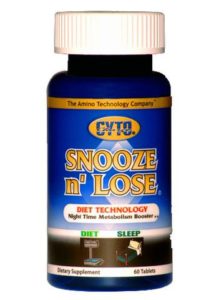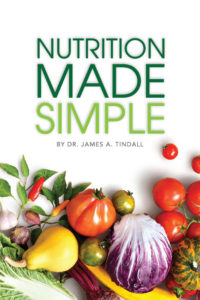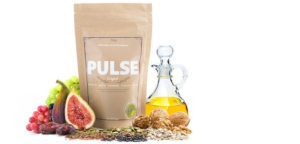How good is your knowledge about foods? When it comes to food, everyone has an opinion and everyone is a critic – carnivore, vegan, or combo – there’s always another persons idea about what you should eat and why some may or may not be bad for you.
You need to know these things for yourself and don’t get your news about them from Facebook. The only agenda should be to increase your knowledge so you are your own expert. Thus, let’s explore some of the information commonly through around and often wrong.
For example, what is a normal serving?
Examples of a normal serving include:
1 medium apple or orange (no bigger than a tennis ball) or banana
1/2 cup of chopped, cooked, or canned fruit
1/4 cup of dried fruit
3/4 cup of fruit or vegetable juice
1 cup of raw leafy greens (a little smaller than a softball)
1/2 cup of cooked vegetables
3 ounces of lean beef, pork, chicken, fish, or similar meat
It’s important to know what a normal serving is in terms of food because it can make a huge difference in the number of calories you intake. For example, generally in a restaurant, one of the smaller cuts of meat is 8 ounces, when 3 ounces is normal. Does this make a difference? Yes! A 3-ounce portion of steak will average about 213 calories or, 71 calories per ounce (28.3 grams); an 8-ounce portion is about 568 calories or, 63% more calories. Imagine all the foods on your plate running about the same proportion higher in intake. This means you are eating too much food, i.e., energy. Moderation is key; once in a while it is okay to eat an 8-ounce portion, but not every day or two.
Advertisement: CytoCharge (click on photo for more info)

Taking an average male at 5’10” and 175 pounds, the needed daily calories without exercise is about 1,950 but, let’s round that amount to 2,000 for easy calculation. Assuming this number is needed, an 8-ounce steak is roughly 1/3 of the daily food requirement for the average male. Thus, is it any surprise that the weight for a male in the U.S. has increased to about 195 pounds – about 1 pound per year for the past 20 years. Also, average calorie consumption today is about 3,750 calories per day per the USDA and FAO for people in the U.S. Small wonder there is an obesity problem and, if you clearly understood normal portion sizes this would not be the case. Remember that even if you only consume 10 extra calories per day more than what your body needs, you would gain about 10 pounds in one year. How much would you gain if you ate almost twice the amount you need each day?
Hype and Fiction:
Eating red meat is bad for your health and will make it harder to lose weight.
Fact: Red meat, pork, chicken, and fish contain some saturated fat and cholesterol. But they also have nutrients that are important for good health, like protein, iron, and zinc. Eating lean meat (meat without a lot of visible fat) in small amounts can be part of a healthy weight-loss plan. A serving size is 3 ounces of cooked meat (about the size of a deck of cards). Choose cuts of meat that are lower in fat such as beef eye of the round, top round, or pork tenderloin, and trim any extra fat before cooking. The “select” grade of meat is lower in fat than “choice” and “prime” grades. However, regardless of choice, red meats should be eaten sparingly.
Hype and Fiction:
Fresh fruits and vegetables are more nutritious than frozen or canned.
Fact: Most fruits and vegetables (produce) are naturally low in fat and calories. Frozen and canned fruits and vegetables can be just as nutritious as fresh. Frozen or canned produce is often packaged right after it has been picked, which helps maintain most of its nutrients. Fresh produce can sometimes lose nutrients after being exposed to light or air. Select fruits that are canned in natural juices if using canned fruits.
Tip: Frozen vegetables generally have better nutrient content than canned vegetables.
Hype and Fiction:
Starches are fattening and should be limited when trying to lose weight.
Fact: Potatoes, rice, pasta, bread, beans, and some vegetables (like squash, yams, sweet potatoes, turnips, beets, and carrots) are rich in complex carbohydrates (also called starch). Starch is an important source of energy for your body. Foods high in starch can be low in fat and calories. They become high in fat and calories when you eat them in large amounts, or they are made with rich sauces, oils, or other high-fat toppings like butter, sour cream, or mayonnaise. Attempt to avoid high-fat toppings and choose starchy foods that are high in fiber, like whole grains, beans, and peas. Also, think brown! Use brown rice, whole grain breads and similar foods instead of a plain baked potato.
Tip: Use a butter substitute or cheese when having a baked potato and a smaller amount of sour cream to reduce caloric and fat content.
Advertisement: Amazon (click on photo for more info)

Hype and Fiction:
Fast foods are always an unhealthy choice and you should not eat them when dieting.
Fact: Fast foods can be part of a healthy weight-loss program with a little bit of know-how. Choose salads and grilled foods instead of fried foods, which are high in fat and calories. Use high-fat, high-calorie toppings, like full-fat mayonnaise and salad dressings only in small amounts. Eating fried fast food (like French fries) or other high-fat foods like chocolate once in a while as a special treat is fine—but try to split an order with a friend or order a smaller portion. In small amounts, these foods can still be part of a healthy eating plan, but only if necessary.
Hype and Fiction:
Fish has no fat or cholesterol.
Fact: Although all fish has some fat and cholesterol, most fish is lower in saturated fat and cholesterol than beef, pork, chicken, and turkey. Fish is a good source of protein. Types of fish that are higher in fat (like salmon, mackerel, sardines, herring, and anchovies) are rich in omega-3 fatty acids. These fatty acids are being studied because they may be linked to a lower risk for heart disease. Grilled, baked, or broiled fish (instead of fried) can be part of a healthy weight-loss plan.
Hype and Fiction:
High-protein/low-carbohydrate diets are a healthy way to lose weight.
Fact: A high-protein/low-carbohydrate diet provides most of your calories each day from protein foods (like meat, eggs, and cheese) and few calories from carbohydrate foods (like breads, pasta, potatoes, fruits, and vegetables). People often get bored with these diets because they crave the plant-based foods they are not allowed to have or can have only in very small amounts. These diets often lack key nutrients found in carbohydrate foods.
Many of these diets allow a lot of food high in fat, like bacon and cheese. High-fat diets can raise blood cholesterol levels, which increases your risk for heart disease and certain cancers. High-protein/low-carbohydrate diets may cause rapid weight loss—but most of it is water weight and lean muscle mass—not fat! You lose water because your kidneys try to get rid of the excess waste products of protein and fat, called ketones that your body makes.
High Protein is not a healthy way to lose weight! It overworks your kidneys, and can cause dehydration, headaches, and bad breath. It can also make you feel nauseous, tired, weak, and dizzy. A buildup of ketones in your blood (called ketosis) can cause your body to produce high levels of uric acid, which is a risk factor for gout (a painful swelling of the joints) and kidney stones. Ketosis can be very risky for pregnant women and people with diabetes.
By following a reduced-calorie diet that is well-balanced between carbohydrates, proteins, and fats, you will still lose weight—without hurting your body. You will also be more likely to keep the weight off.
Tip: About ½-1 gram of protein per pound of body weight is all you need and the low to high amount is based on exercise intensity—the greater the intensity, like that of a professional athlete program, the more protein you need.
Hype and Fiction:
Dairy products are fattening and unhealthy.
Fact: Dairy products have many nutrients your body needs. They have calcium to help children grow strong bones and to keep adult bones strong and healthy. They also have vitamin D to help your body use calcium, and protein to build muscles and to help organs work properly.
Low-fat and nonfat dairy products are as nutritious as whole milk dairy products, but they are lower in fat and calories. Choose low-fat or nonfat milk, cheese, yogurt (frozen or regular), and reduced-fat ice cream.
For people who cannot digest lactose (a type of sugar found in milk and other dairy products), lactose-free dairy products can be used. These are also good sources of protein and calcium. If you are sensitive to some dairy foods, you may still be able to eat others, like yogurt, hard cheese, evaporated skim milk, and buttermilk. Other good sources of calcium are dark leafy vegetables (like spinach), calcium-fortified juice, bread, and soy products (like tofu), and canned fish with soft bones (like salmon). You may also use calcium supplements.
Many people are worried about eating butter and margarine. Eating a lot of foods high in saturated fat (like butter) has been linked to high blood cholesterol levels and a greater risk of heart disease. Some research suggests that high amounts of “trans fat” can also cause high blood cholesterol levels. Trans-fat is found in margarine, and in crackers, cookies, and other snack foods made with hydrogenated vegetable shortening or oil. Trans-fat is formed when vegetable oil is hardened to become margarine or shortening, a process called “hydrogenation.” More research is needed to find out the effect of trans-fat on the risk of heart disease. Foods high in fat, like butter and margarine, should be used in small amounts. A good option is to use those margarines with no cholesterol or trans-fat, but you still need to watch the calories.
Tip: Look for ‘Tran’s fat free’ snacks on your grocery shelf.
Advertisement: Don Tolman International (click on photo for more info)

Hype and Fiction:
Low-fat or no fat means no calories.
Fact: Remember that most fruits and vegetables are naturally low in fat and calories. Other low-fat or nonfat foods may still have a lot of calories. Often these foods will have extra sugar, flour, or starch thickeners to make them taste better. These ingredients can add calories, which can lead to weight gain.
A low-fat or nonfat food is usually lower in calories than the same size portion of the full-fat product. The number of calories depends on the amount of carbohydrate, protein, and fat in the food. Carbohydrates and proteins have 4 calories per gram, and fats have more than twice that amount (9 calories per gram).
Be a “Sensible” Consumer. If you don’t know whether to believe a weight-loss or nutrition claim, check it out! Find out more about nutrition and weight loss by reading and study and talking with a registered dietitian. Learning more about nutrition will help you to make sense of the hype and fictions, find out the truth, and practice healthy eating and weight-control habits.
Hype and Fiction: “Going vegetarian” means you are sure to lose weight and be healthier.
Fact: Vegetarian diets can be healthy because they are often lower in saturated fat and cholesterol and higher in fiber. Choosing a vegetarian diet with a low-fat content can be helpful with weight loss. But vegetarians—like non-vegetarians—can also make poor food choices, like eating large amounts of junk (nutritionally empty) foods. Chips, nuts, and other high-fat, vegetarian foods should be eaten in smaller amounts.
Remember that if you have any doubts about what others are saying about food, look it up from reputable sources and find out for yourself. This means don’t get your information from Facebook and paid commercials on TV.







